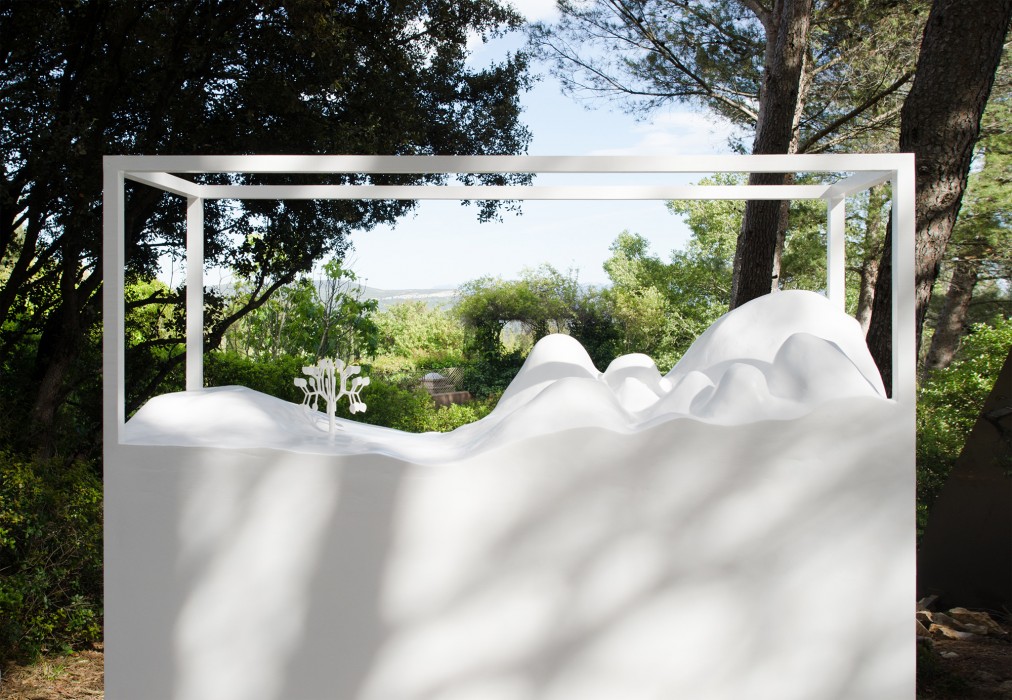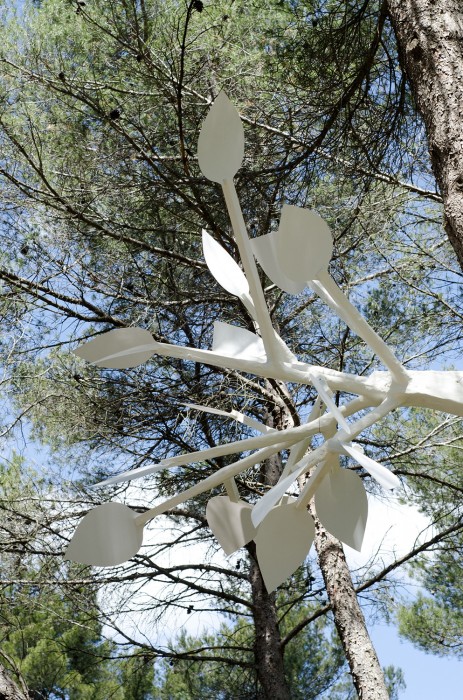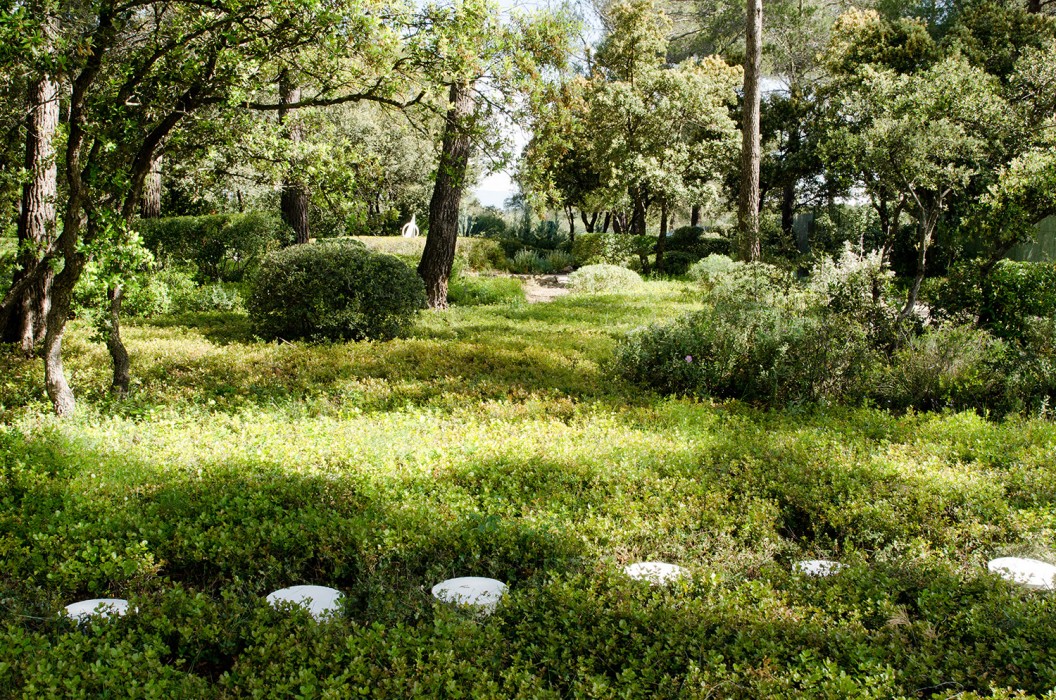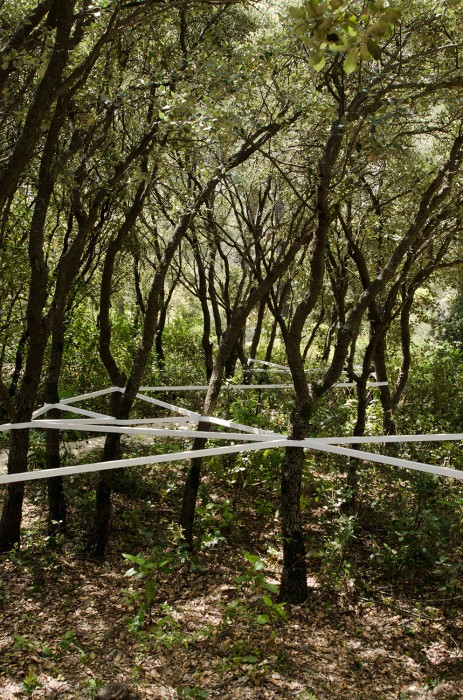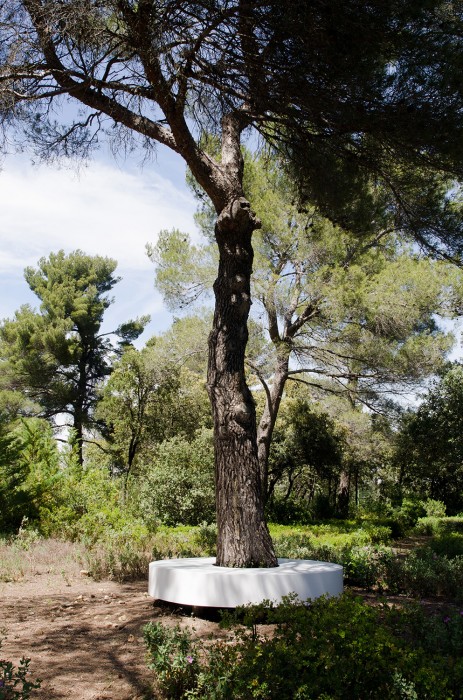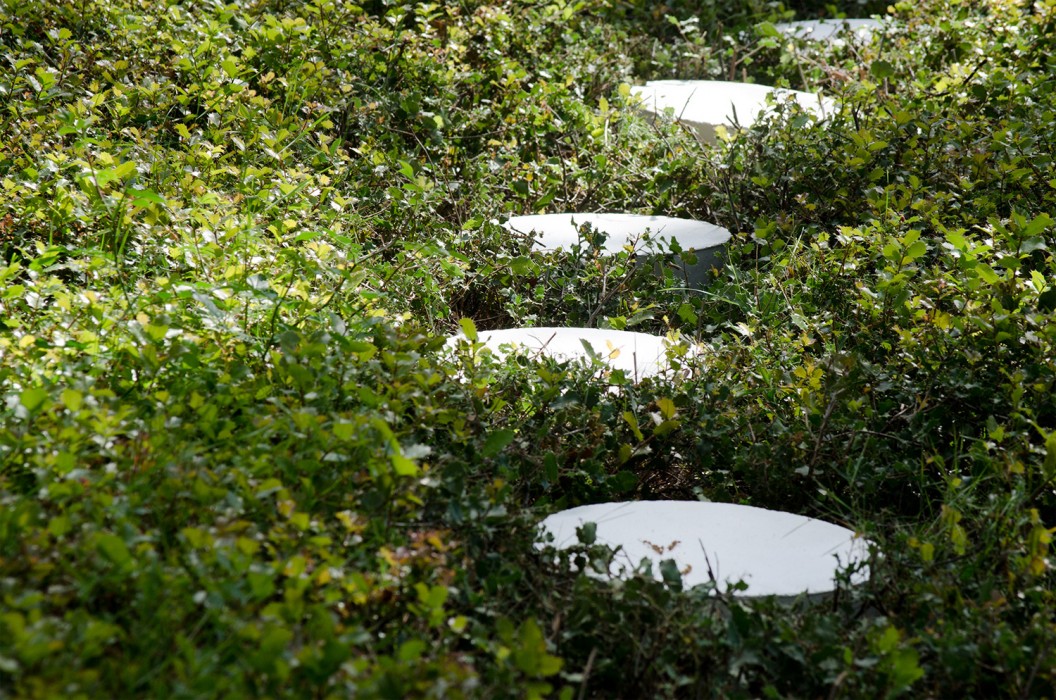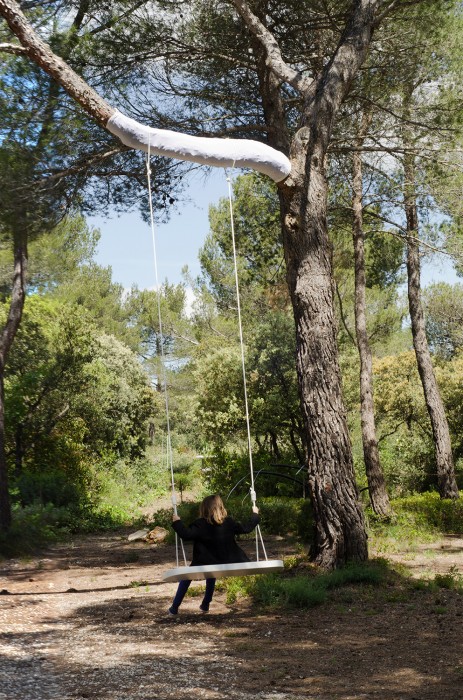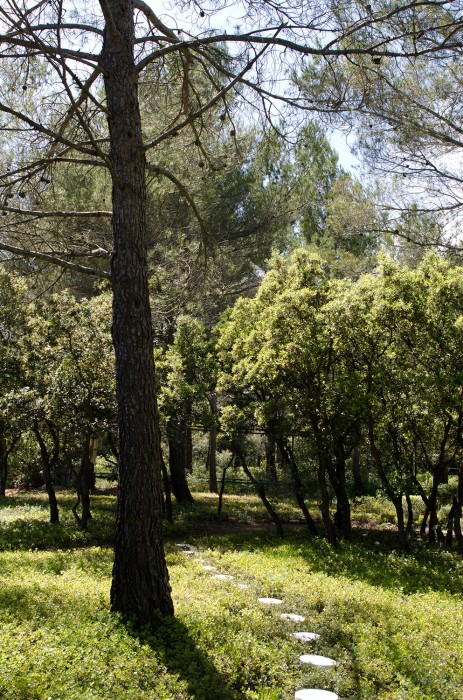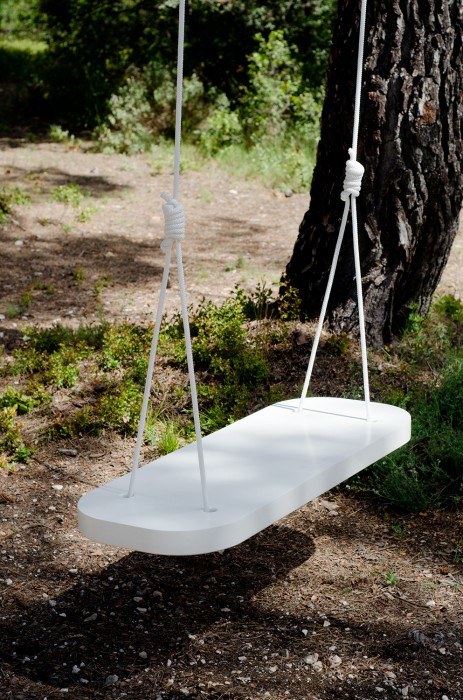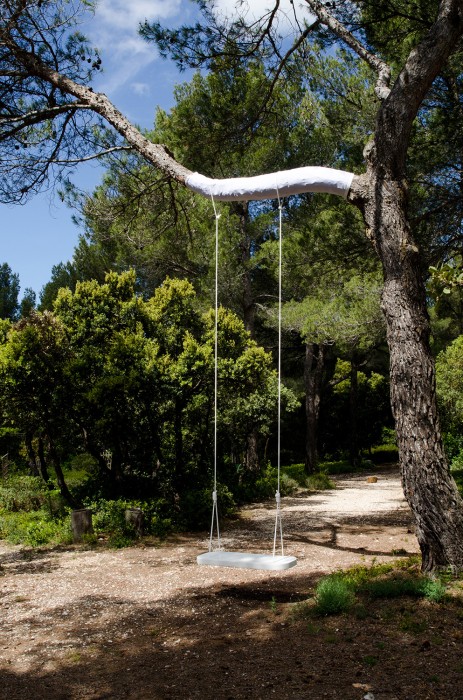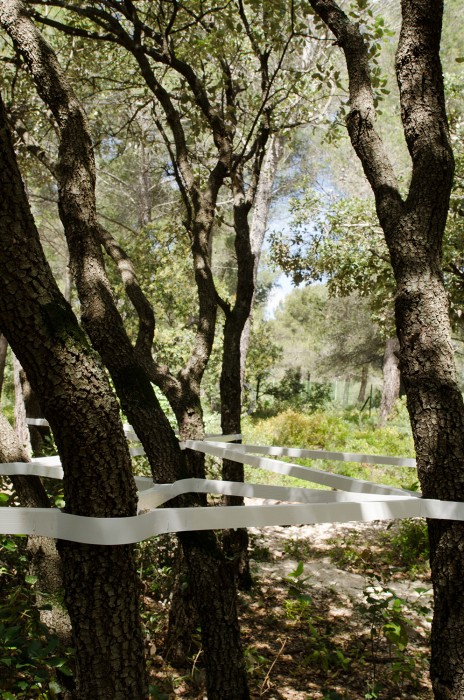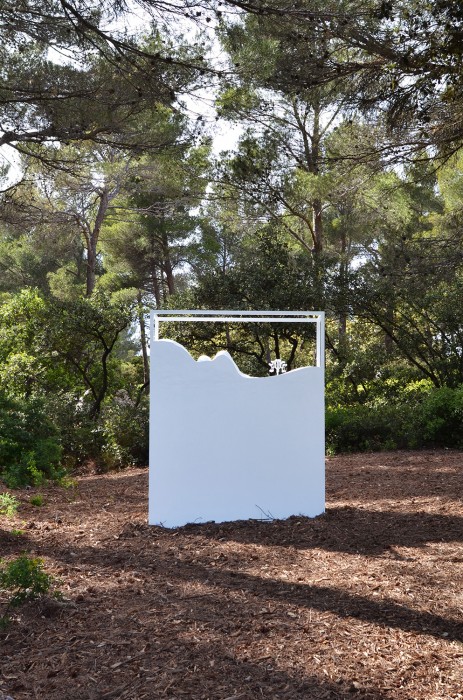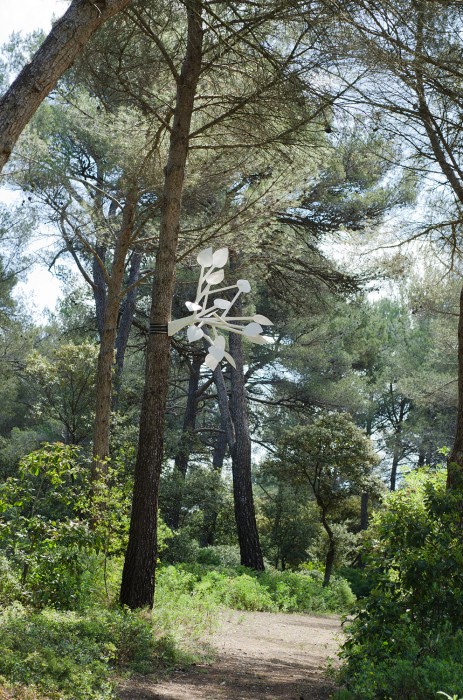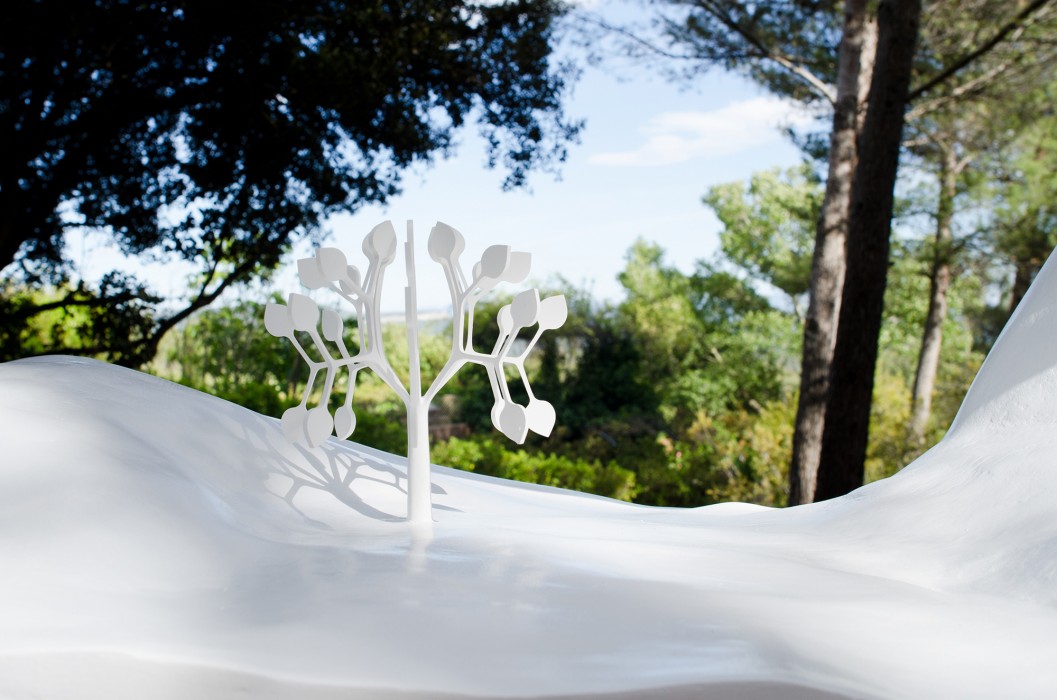Residency « Voyons Voir » at the Jardin des 5 sens, Aix-en-Provence. Marseille-Provence 2013 European Capital of Culture.
Anthropo-Scène, man’s stage, his little sight within nature. Through six installations spread over the entire garden, our program shows the inversion of the relationship between mankind and nature throughout History. As a matter of fact, if in its early stages man was submitted to nature through climate and resources, nature is now suffering from his behavior. We wish to testify to this inversion to the borders of man’s manipulations.
We therefore propose to approach this relationship through its different stages.
In the beginning, there is co-existence. A contact is established, an encounter during which man has little impact over his environment.
Man slowly takes ownership without changing nature and realizes he can utilize it. Then, nature starts being diverted, used, instrumentalized. Man begins to graft and take cuttings, mix species, refine essences. Human action expands and during the agrarian period, confines, constraints and limits nature to create territories. Little by little the environment is modified. Scientific advances offer new possibilities, genetic engineering enables the alteration of the living and particularly plants. The number of combinations increases as knowledge evolves and grows. The ultimate stage of this grip of man on nature is probably its complete recasting: a laboratory nature in the service of man’s needs. A nature without nature.
Cohabitation
Cohabitation is the period during which man prepares the ground of his relationship to nature. It is the beginning of a superimposition of man and nature. For this intervention, we propose to draw our inspiration from the ancestors of bridges: large stones merely laid in the water. We symbolically lay in the garden a set of small modules on which the visitor can walk. This « bridge » rejoins two paths without touching nature. It allows the visitor to walk on nature without damaging it.
Appropriation
Appropriation announces a shift in man’s relationship with nature. Man understands that he can benefit from this nature that surrounds him. He starts marking out territories. We present a platform defining an access area around a tree. A micro-territory where one can sit, lay… but that monopolizes the tree and could potentially hinder its growth.
Misappropriation
Nature is here being transformed for utilitarian purposes. The branch is diverted to become a swing chair illustrating the frail and oscillating balance between man and nature.
Constraint
Constraint represents man’s willingness to shape nature according to his desires. The device contraints the plant into growing in a direction imposed upon it. The device here expands over an entire area to express replication of the phenomenon.
Modification
Man starts modifying nature in depth through genetics…he amplifies it to satisfy his desires, his needs, his uses. A branch which properties are augmented evokes the quest for performance which side effects are unknown.
Recasting
Recasting indicates a reinvention of the biological models. It is nature without nature, re-written by man. We propose a minuscule nature, on display. Echo of a beauty that might be lost forever… hygienist, barely resorting to formal codes to identify the ersatz.
